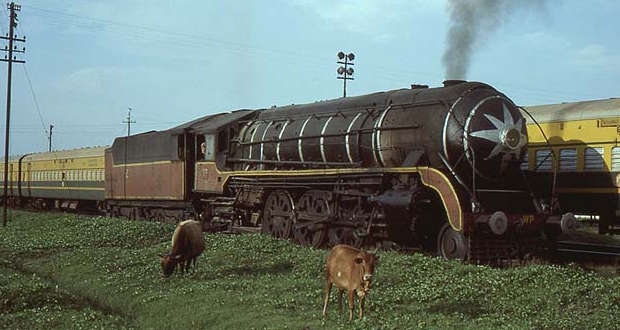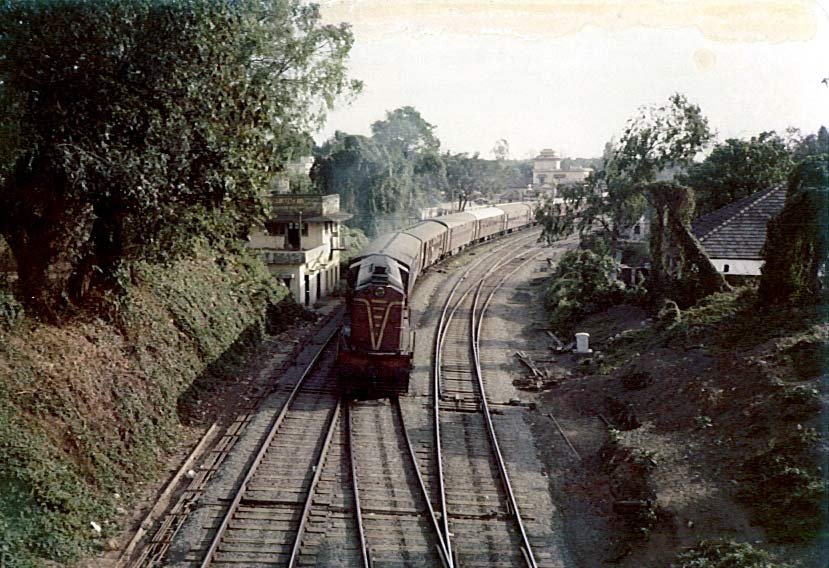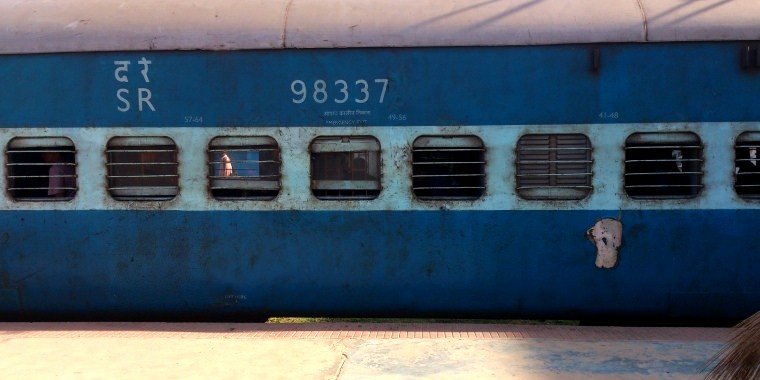Indian Railways’ Post Independence History

The Indian Railways and the Republic of India were both born out of the merger and amalgamation of a number of very diverse, different and independent entities. While India was formed out of a union of hundreds of British presidencies, provinces or semi-independent or British-controlled Princely States, Indian Railways were born out of the merger of 41 different railway companies which were again mostly controlled by British interests. According to the socialist policies adopted by the government, newly independent India would nationalize all essential sectors and services including transportation and one single government-controlled organization would cater to everything related to rail transport. Hence was born the Indian Railways, out of the ashes of the mess that was British-India Railways. The modern history of the Indian Railways had begun.
The Beginnings and Core Policies
IR had a humongous task ahead of them. They had to start from the very bottom: Integrate all assets, stock and finances of all those leftover companies first and then nationalize the new entity. They had to procure a hell lot of locomotives, wagons, coaches and material, find new personnel and train them and decide on the methods, standards and policies to be adopted. A lot of track had to be rebuilt and many stations to be built up. As the railways were to be an important vehicle of national integration, the first priorities of the newly formed Indian Railways were to be integration, bringing in uniformity in services and appearance and operations, followed by decolonization, upgradation and modernization. IR has done a spectacular job of the first two, it has somewhat succeeded in the third one but has largely failed in the last two. The reasons for this are not anything railway-specific, but is has got to do with the same plagues that pull our country back in all spheres.
The Railways are often said to be one of the major unifying forces of this vast and diverse country. It hence made sense that the railways be uniform as well to bring in that sense of “oneness” among Indians. This is a main reason why English is still the official language of the Indian Railways. All the diversity that existed in the railways of the British were done away in one stroke and IR decided to adopt uniform structure of operations, rakes, looks, appearance and fares across the network. That is why we see the same aspects everywhere, ranging from black lettering on yellow station boards to blue-liveried coaches of the same type everywhere in India. Uniformity, win.
Several big-ticket projects started immediately after independence, most of them aimed at addressing infrastructure needs and overhaul of the network. Chittaranjan Locomotive Works (CLW) was established in 1949, HAL started producing coaches in 1950, The Intergal Coach Factory (ICF) was founded in 1955 and The Diesel Loco Works (DLW) of Varanasi in 1961. By 1957 It was decided that the network was to be gradually electrified with 25 kV AC to be adopted as traction following the recommendation from SNCF, and 2000 km of route track would be electrified by the next 8 years. Another big step was the decentralization of the Indian Railways with the creation of zones based on Geography for increased efficiency. Southern Railways was the first to be inaugurated in 1951. Northern, North Frontier, Eastern, Central and Western Railways followed it. Later, more zones were added and as of today we have 17 zones including the Kolkata Metro!
Decolonization of the railways never really caught on. All the old classes, safety systems and operating procedures continued to be followed for 20 odd years. In true Indian fashion, usage of outdated practices continued despite some tragic events which also failed to open eyes, the most notorious among these being the derailment accident of the 603 Madras – Tuticorin Express which plunged off the Maradiyar Bridge at Ariyalur, 60 from Trichy, Tamil Nadu on November 23 1956, killing 154 people. The then Railway Minister Lal Bahadur Shastri famously resigned after this accident citing ‘moral responsibility’. Even today this is the most remembered railway accident in India. The impact of this accident and his resignation was so great that IR woke up and decided to modernize the network though it took them another 10 years to implement these decisions.
Image Courtesy: The International Steam Pages
The Real Story Behind “Modernization Projects” and more.
But coming to look at it, all these great polices like Project Unigauge and CORE were aimed at streamlining running operations for making life easy for the railways and incredibly not for the people. Even the introduction of new locomotives was to cut overheads and fuel cost. Little thought or importance was given to passengers, their comfort, speed or safety. There were no plans for increasing running speed, upgrading lines or improving amenities in trains, providing comfortable or sensible classes of accommodation or even updating the design of the trains. Outdated and uncomfortable trains continued to wheeze along the countryside with travelers stacked inside enduring miserable conditions. A glaring example is our classes of accommodation. We had Third Class till 1972, when it was “abolished” only to be renamed “Second Class Sitting”. Sleeper Class didn’t become widespread till 1990 and AC 3-tier till late 1980s. General Indian “chalta hai” complacency and class mentality of the Indian bureaucrat and politician that “the ‘common’ India doesn’t know jack and doesn’t need or deserve good facilities” must have been the reason behind this. A good example of this is speed. Most express trains in India today run at around the mark of 100 kph, the highest regular speed achieved being 150 kph by the Bhopal Shatabdi. But this is not a recent development. Test trials of trains running at 160 kph were conducted in 1963 itself! Imagine what if we had followed that up.
The reason for the condition IR finds itself in today can be traced back to its beginnings. Though we started off on the right foot, we faltered badly in between. In its early decades, IR was no means inferior to the other railway systems of the World. Japan and China had non-existent railway networks and most of the European networks were running into the ground, struggling to stay afloat in the post-war mayhem. The USA had already started abandoning railroads in favor of automobiles and later air travel while Russia hadn’t even thought of the Trans-Siberian Railway yet. India on the other hand, had 50,000 km of rail line ready for the taking, a huge and more than wiling customer base, world-class rolling stock designed by the Swiss themselves and modern, brand-new WP Pacific class locomotives being churned out of her own plants. All that was required to sustain this was a modernization program with clear plan of vision for the path ahead. But we faltered, as it always is, due to lethargy, wrong policies and politics. The track, vision and heart were in the right place, but politics, parochialism, mismanagement, apathy and populism ruined those great ideals that were put forward in the beginning.
All is Still Not Lost
It was only around the mid 1990s after liberalization of the Indian economy when the Railways somehow started desperately pushing for modernization with better locomotives, streamlining of running of trains and for the first time started looking closely at offering better creature comforts quality service to its passengers. We are still far from being anywhere near the best railway systems in the World in terms of refinement, but atleast we are better off than how we were in the 1980s. Some of those “better” things are WAP-4+ and WAG-5+ locos, LHB coaches, computerized reservation, Garib Raths, Durontos, Double Deckers, Jan Shatabdis and so on. The Railways manages to survive even after 65 years and continues to carry millions of people everyday to all far corners of the country pretty much on time on ridiculously cheap fares. Looking at the macro picture we seem to be doing quite good.
The pulse of the Indian Railways closely follows the pulse of the nation, as this great institution is by a great measure the arteries and veins of the country, its lifeblood, the carrier of the Oxygen the country needs to survive. Just like the condition of the body affects all its components, the Railways is affected by every mood swing of the nation, just as if it were part of the same living, breathing organism. And it is not to be forgotten that it was the Railways which helped to solidify the “Idea of India” in the first place and continues to do so. Even though there has been lots of complacency, this is an achievement that cannot be overlooked and came as a result of some focused developments that have saved our Railways from shutting shop altogether. If some of those projects could bring the Railways to what it is today, imagine what many other could have done? More about those projects in the next episode.
Previous Part (05) – Indian Railways History – At Independence
Next Part (07) – Indian Railways History Post Independence Part 2






